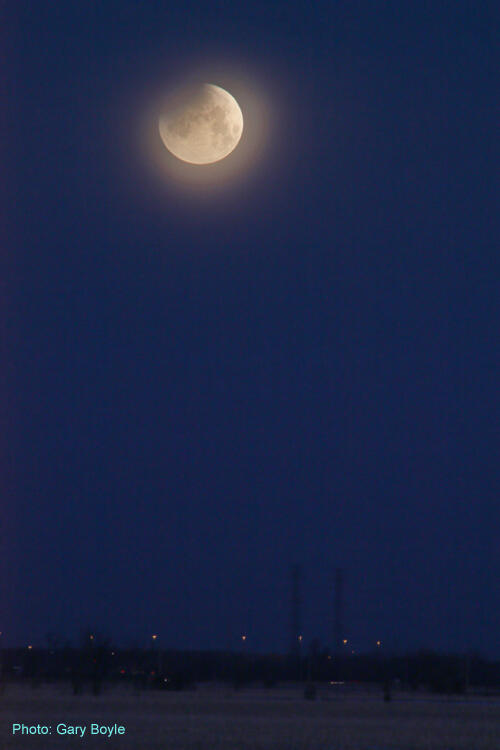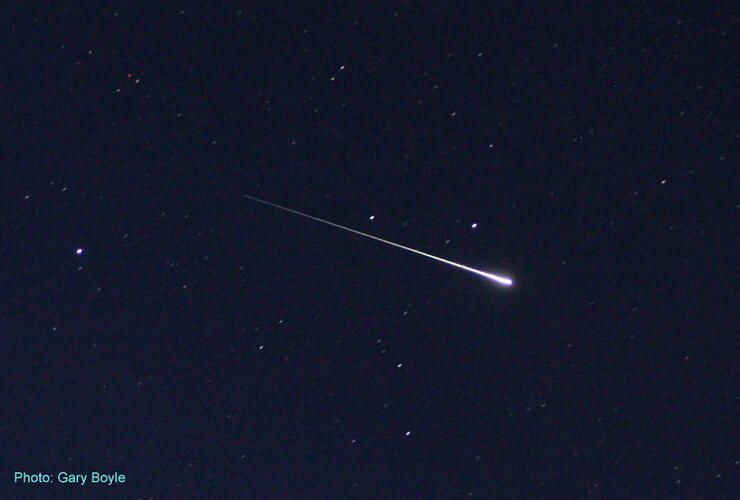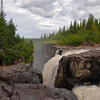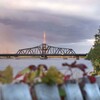
Please note this page may no longer be up to date. For new stories about Northern Ontario visit us here.
10 Celestial Events to Watch for This Summer

For thousands of years the night sky was a special place for entertainment and messages from the gods. Keen eyed observers and early civilizations followed the path of the bright planets against the background constellations.
The telescope has only been around for a little more than 400 years and has changed the way we observe the cosmos! The best news: today’s amateur astronomers can purchase state-of-the-art telescopes and cameras with results that rival professional observatories.
But astronomy is more than simply observing and imaging the farthest objects in the universe; it's enjoying the big picture. Words cannot describe being in the countryside, away from light pollution, on a moonless night as some two-thousand individual stars can be seen with the glow of billions. Throughout the year, various celestial events will play out overhead in Northeastern Ontario for our viewing pleasure—and you don't even need a telescope to enjoy them! Here are some to look out for in the coming months.

Blue Moon
The Blue Moon refers to the second full moon of the same calendar month. This was the case back on January 31, along with the total lunar eclipse and super moon (the next total lunar eclipse will be January 21, 2019). The next blue moon will occur on March 31.
But the sun and moon have physically turned blue before. Lingering smoke during massive forest fires in the early 1950s in western Canada caused central and eastern portions of the continent to see the sun and moon appear blue or violet. Thick smoke also forced street lights to be turned on during the day.
Meteor Showers
Simple meteors seen throughout the night are the re-enter of debris from the early solar system, or just space junk (nuts, bolts, wires, paint chips, etc). As they come in contact with Earth’s atmosphere, friction causes them to glow and vapourize. The larger the particle, the brighter and longer the streak.
From time to time larger meteoroids from the solar system survive the descent and land as meteorites. Throughout the year, our planet crosses debris fields of comets that visited long ago. At these times, the amount of “shooting stars” increases.

Here are a few meteor showers to look forward to in 2018:
Lyrids
Peaks on the night of April 22 - 23, with about 18 meteors seen per hour and moving at 48 km/sec. The Lyrids can produce bright fireballs that light up the ground. A 41% lit moon will only set around 2 a.m.
Perseids
Peaks on the night of August 12 - 13 and considered the best summer time shower. 100 meteors could be seen per hour moving at 60 km/sec. As the name indicates, the stream or radiant appears to come from the constellation Perseus. New moon is on August 11, so no lunar interference for this show. A must-see event, especially from the pristine dark skies of Northeastern Ontario.
Orionids
Peaks on October 4 - 5 and considered an average meteor shower producing 10 to 20 meteors per hour, but has been known to surprisingly produce as many as the Perseids. Tiny sand sized fragments will strike our atmosphere at 67 km/sec. Moonrise after 1 a.m. and its glow interferes for the rest of the night.
Leonids
Peaks on the night of November 17 - 18 with an hourly rate of about 15 per hour. Moonset occurs after midnight. This shower has produced meteor storms in 33 years intervals with a few absences but predictions indicate Earth will not see a significant storm until the year 2099.
Geminids
Peaks on the night of December 13 - 14 and is the best shower of the entire year. With a strong display of 120 meteors per hour, they gracefully burn up at 36 km/sec. Moonset will occur after 11 p.m. Although snow and frigid temperatures will be upon us, this is a must-see event.
Planets
Venus is an extremely bright object that continues to slowly rise in the western sky after sunset until August 17. After that date the planet begins to sink back toward the horizon as it passes between the Sun and Earth.
On March 30, Jupiter is above the south eastern horizon at 11:30 p.m. and dominates the sky. By 3:30 a.m. both Saturn (left) and Mars rise together.

Mars, also known as the red planet, will be the show piece of the summer. Our planets achieve their closest distance from each other every 26 months. Follow Mars as it separates from Saturn to reach its brightest since 2003 on July 27.

Be sure to follow me on Twitter for updates and breaking news at @astroeducator!
Until next time, clear skies everyone.
Recommended Articles
The Seven's Best Hikes, Biking Trails and Lakes

7 Best Spots to Check Out in The Seven

Budget Bliss: Explore Northeastern Ontario Without Breaking the Bank

Bring Your Fam!

Time to Unwind: 6 Spa Havens to Discover In The Seven
5 Amazing Places to SUP in Northeastern Ontario

5 Amazing Bike Rides to Discover

Northern Lights in Northeastern Ontario

Northeastern Ontario's Best Pride Festivals

Fish for one of the World's Rarest Species of Trout

An Insider's Guide to Manitoulin Island

6 Small-Town Gems to Explore in Northeastern Ontario

11 Best Things to Do in Kapuskasing, Ontario




























